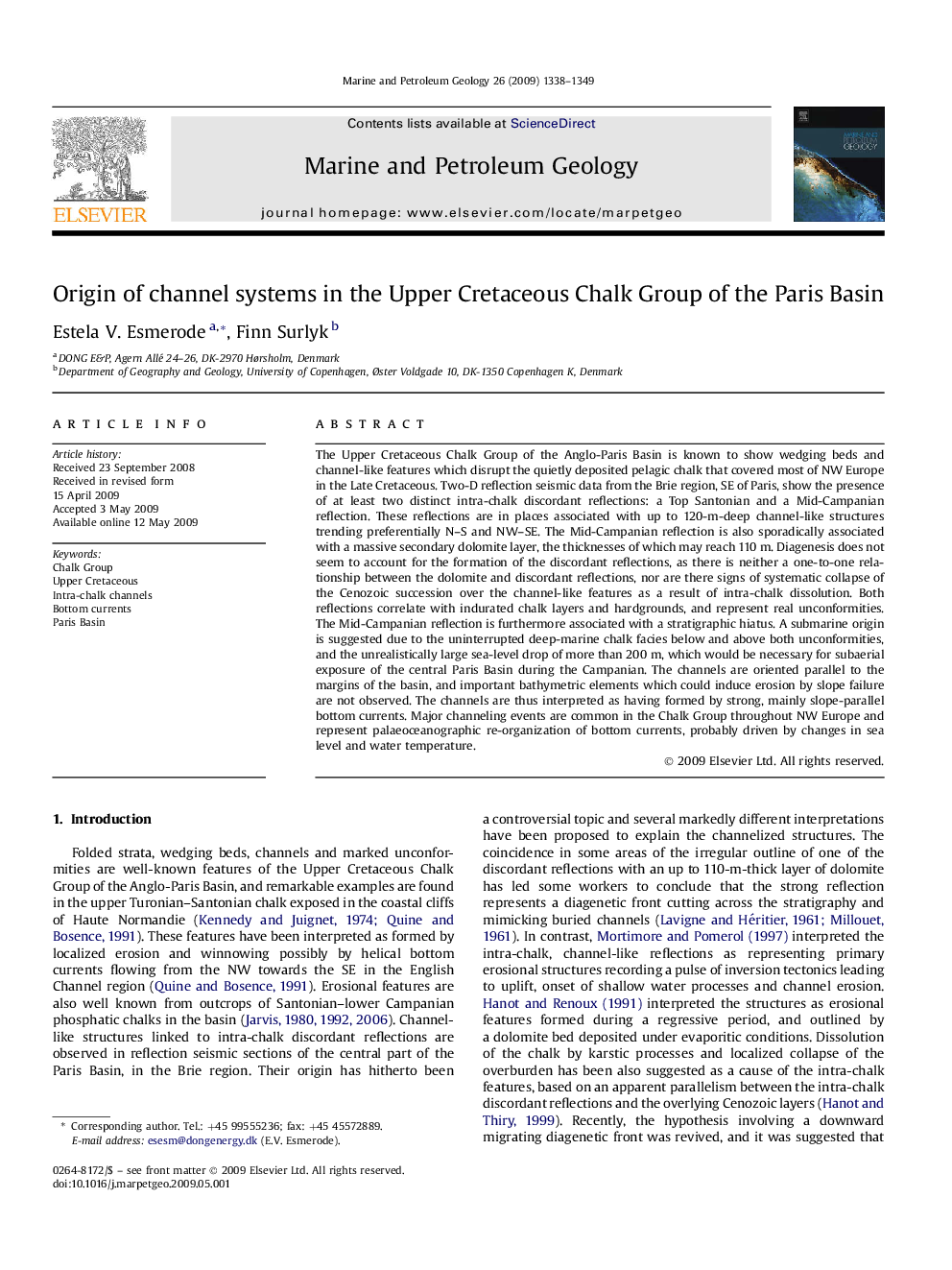| کد مقاله | کد نشریه | سال انتشار | مقاله انگلیسی | نسخه تمام متن |
|---|---|---|---|---|
| 4696554 | 1351687 | 2009 | 12 صفحه PDF | دانلود رایگان |

The Upper Cretaceous Chalk Group of the Anglo-Paris Basin is known to show wedging beds and channel-like features which disrupt the quietly deposited pelagic chalk that covered most of NW Europe in the Late Cretaceous. Two-D reflection seismic data from the Brie region, SE of Paris, show the presence of at least two distinct intra-chalk discordant reflections: a Top Santonian and a Mid-Campanian reflection. These reflections are in places associated with up to 120-m-deep channel-like structures trending preferentially N–S and NW–SE. The Mid-Campanian reflection is also sporadically associated with a massive secondary dolomite layer, the thicknesses of which may reach 110 m. Diagenesis does not seem to account for the formation of the discordant reflections, as there is neither a one-to-one relationship between the dolomite and discordant reflections, nor are there signs of systematic collapse of the Cenozoic succession over the channel-like features as a result of intra-chalk dissolution. Both reflections correlate with indurated chalk layers and hardgrounds, and represent real unconformities. The Mid-Campanian reflection is furthermore associated with a stratigraphic hiatus. A submarine origin is suggested due to the uninterrupted deep-marine chalk facies below and above both unconformities, and the unrealistically large sea-level drop of more than 200 m, which would be necessary for subaerial exposure of the central Paris Basin during the Campanian. The channels are oriented parallel to the margins of the basin, and important bathymetric elements which could induce erosion by slope failure are not observed. The channels are thus interpreted as having formed by strong, mainly slope-parallel bottom currents. Major channeling events are common in the Chalk Group throughout NW Europe and represent palaeoceanographic re-organization of bottom currents, probably driven by changes in sea level and water temperature.
Journal: Marine and Petroleum Geology - Volume 26, Issue 8, September 2009, Pages 1338–1349